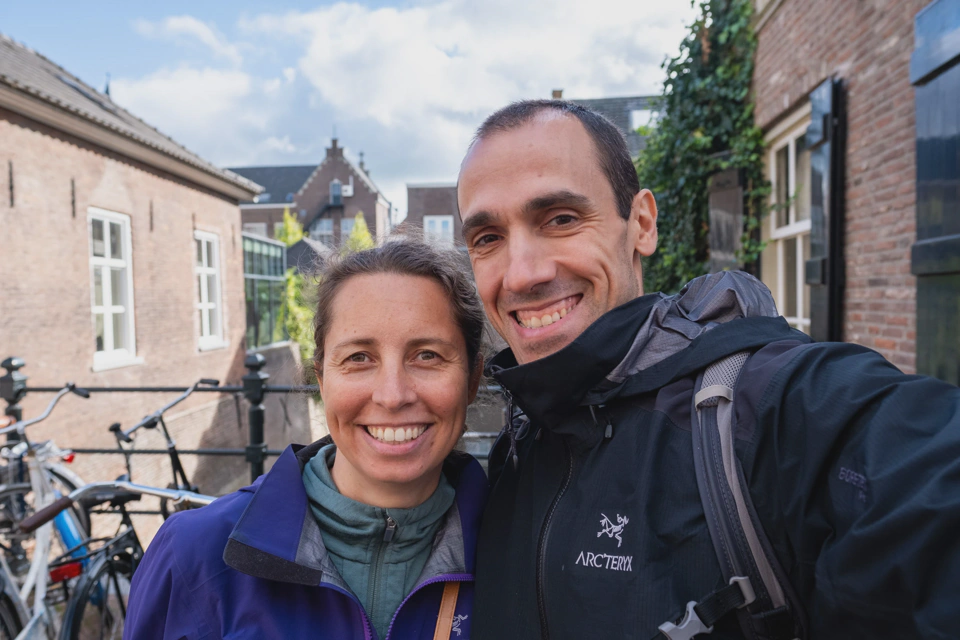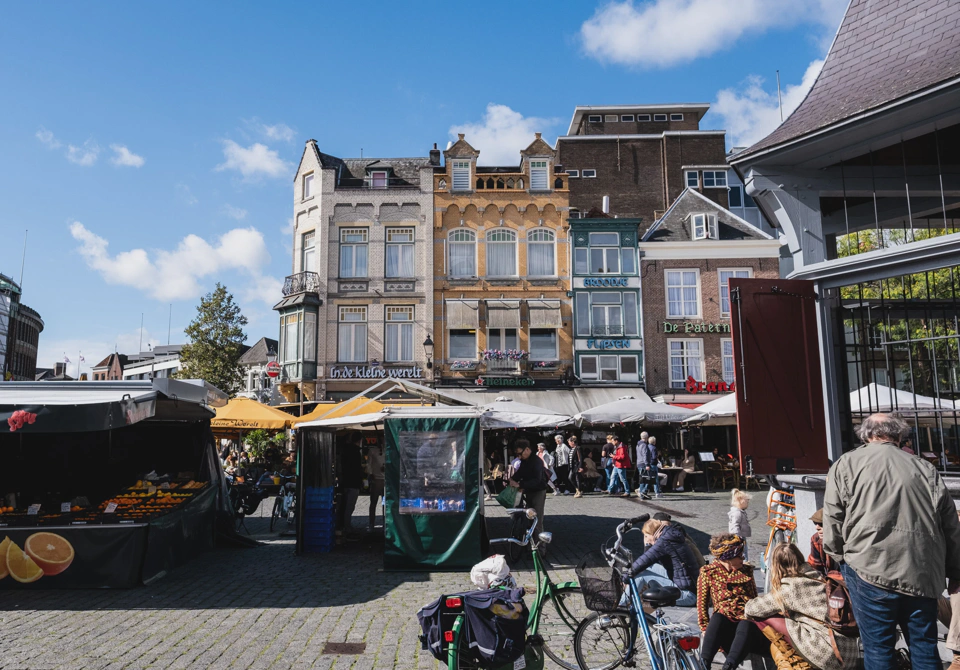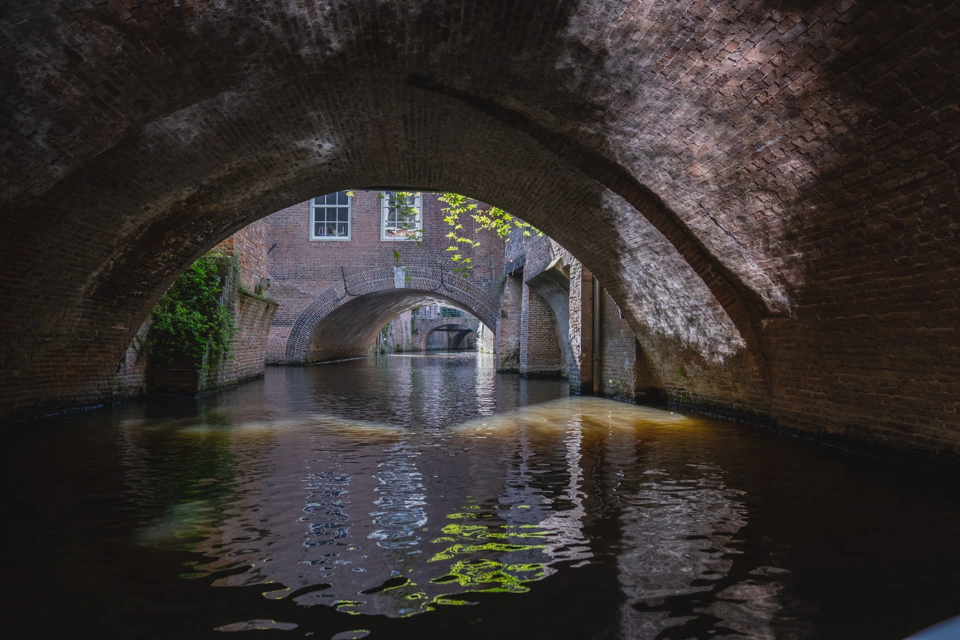Our next day trip was to ’s-Hertogenbosch (“the forest of the duke”), colloquially known as Den Bosch. The Duke of Brabant founded the city in the late 1100s to protect his lands from neighboring Gelre and Holland, who, years later, destroyed the city. The city was rebuilt and, centuries later, became the birthplace of Hieronymus Bosch.
Soon after arriving in Den Bosch we found a Pepernoten shop and we bought a bag of a light coffee flavor. The tall friendly man running the shop told us that he was retired and worked at the shop for fun.
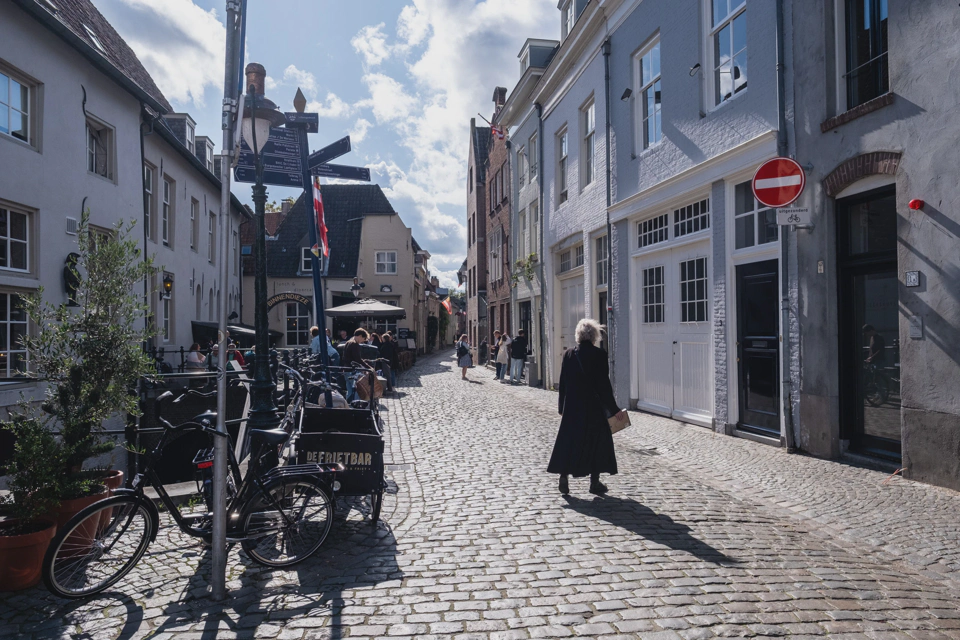
A few streets later, we found a bakery whose goods smelled irresistibly good so we went in to buy vegan worstenbroodjes (Dutch hotdogs). It was a small place with space for about five people, and when we entered, with two locals inside it was cozy. It got cozier moments later when a man in a wheelchair entered. The walls were crowded with shelves, but the owners had found space for a “Winner of the best spekulaas cookies of 2022” award.
The baker was joking all the time and everybody was laughing. I didn’t understand a thing but I couldn’t help but smile and feel good. Even though I shared nothing with the people at the bakery, didn’t understand a thing, and would never see them again, I felt during the time it took to get worstenbroodjes, part of this community. We have the brains of social animals. Humor and body language matter.
Today was market day. When we arrived at the market square it had rows of stalls surrounded by tourists and locals. I quickly identified the two or three interesting stalls (baked goods, warm food), but Loes wanted to systematically check every single one and so we did. We bought tasty croissants and ate them sitting under a Hieronymous Bosch stone statue. From there we took in the sights of the beautiful and colorful 17th-century houses behind the stalls, the sun, and the bustle.
Our next stop was at Sint-Janskathedraal (“Cathedral of Saint John”), considered the finest Gothic cathedral in the country. After many years of visiting too many churches, basilicas, and cathedrals, I’m mostly blind to them, like I’m blind to computer ads. But the cathedral’s organ left me repeating “wow” a few times. A kind-looking Dutch woman who was enjoying the organ and the rest of the cathedral’s interior gestured to me her amazement. I tried to gesture back the same feeling with my own gestures. She smiled and laughed, I hope she interpreted what I meant.
I couldn’t find an authoritative source explaining why cathedrals were so high, but if the intention is to make you feel small and distant from the top, they nailed it.
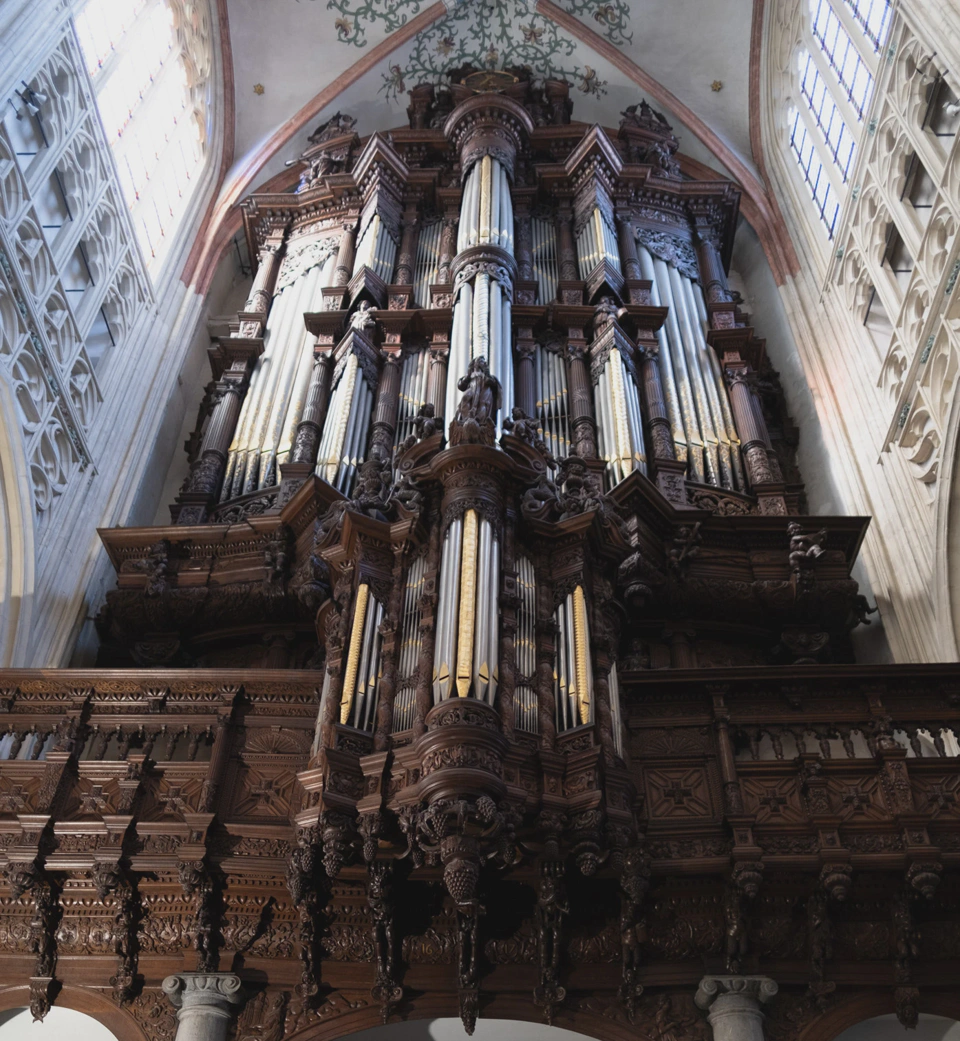
The construction of the cathedral started in 1220 and finished in 1340. I asked Loes if she thought that the people who worked on the cathedral and lived to see it finished were allowed to go up the tower to take a look. Her tyrannical answer was, paraphrasing, “No way, that’s only for the hunchback bell-ringers.” If I had been there I would have given a free year pass to everybody in the city.

Next we headed to the small dock where our booked boat tour would soon start. This tour was also in Dutch but they gave me a small English pamphlet and I had Loes with me so I got many interesting points.
The city historically had originally had 12km of canals, but it currently only had 3km. A few years ago, most of the population convinced the town hall to fill the canals but a small group of locals rebelled and fought to keep them because of their historical and cultural value. They won.
As we cruised through the web of mostly narrow canals, the tour guide explained how people used the canals in old times: to do the laundry, transport their goods, as their sewer, fire extinguisher, etc. At one point we saw a door leading into a church which was still being used by just married couples to start their honeymoons. Several of the tunnels even had perches for bats and pigeons, and at one point we even went through a modernist tunnel stretch that looked unlike the rest of the canals.
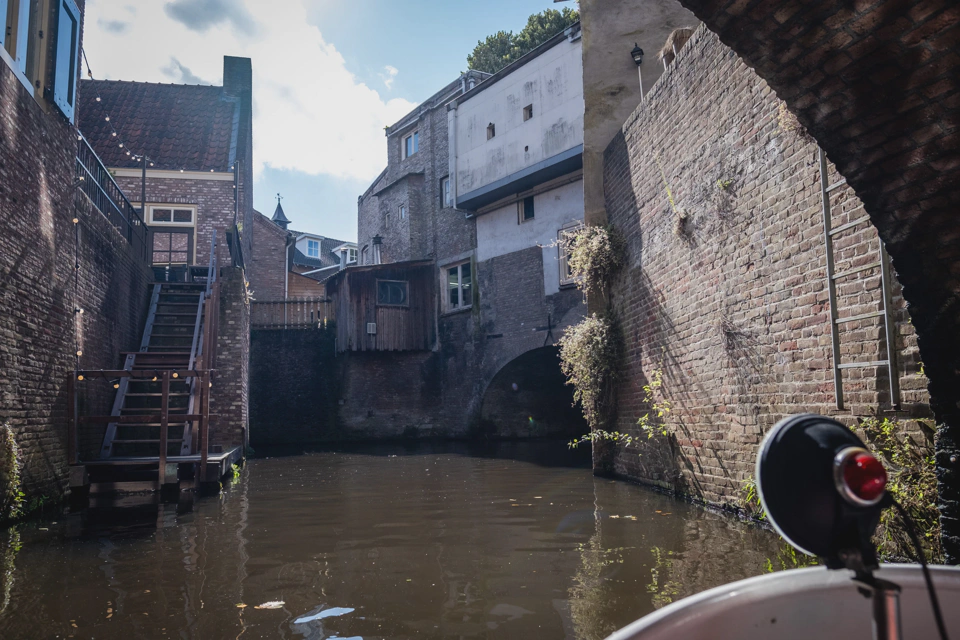
Some of the other tourists in the boat were Dutch, others weren’t. We had a few couples, and a group of young women who were on their phones most of the times I looked in their direction. One of the Dutch men sitting at the opposite end of the boat from the thin white-haired guide tried to enliven the tour by constantly asking her questions or making what looked like jokes. The guide, on her part, seemed to put an effort into doing actual story-telling by raising and lowering the voice, and using different intonations. At some point, we passed next to a road where a man sitting on a bench was singing. The guide said that the man used to sing daily, but had scaled back in recent years.

Near the end of the tour, we saw a boat suddenly come out from one of the canals. The guide pointed out that she hadn’t heard the boat but had felt it which made me wonder how many years she had been doing this.
For anyone else with mental scars from almost drowning as a kid and afraid of falling into pitch-black waters, the water level in the canals was about 2.5m high. Enough height to drown if you fall and suffer a panic attack because of the crocodiles, piranhas, and dangerous bacteria that you’re sure will smell you and get to you soon.

After the tour ended, we walked back to the train station and got on our train home. We sat next to a drunk who had his smart phone speaker at full blast, and who had, we learned later, scared the two pretty teenagers sitting in front of us.
It was the end of another memorable adventure.
